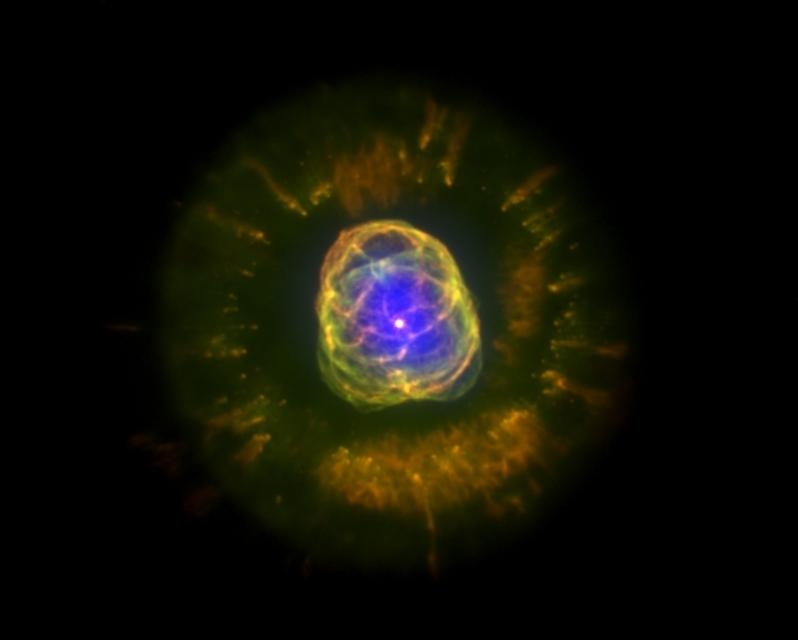
Editor's Note: As of Aug. 1, 2020, NASA no longer refers to nebula NGC 2392 as the "Eskimo Nebula," as it can be considered an insensitive and offensive term. More information at: https://www.nasa.gov/feature/nasa-to-reexamine-nicknames-for-cosmic-objects.
 Credit: M. A. Guerrero (IAA-CSIC) and ESA
Credit: M. A. Guerrero (IAA-CSIC) and ESA
Inside the Eskimo
Low-mass stars shed their coats at the end of their lives. These "coats" (really the star's outer layers) are somehow ejected from the star, and move outward into interstellar space, forming beautiful structures called planetary nebulae. One particularly beautiful example of a planetary nebula is the
Eskimo Nebula, pictured above in an image by the Hubble Space Telescope. The Eskimo Nebula is composed of an outer nebula and an inner one, indicating that the ejection process is episodic. A new observation with the XMM-Newton X-ray Observatory shows that the inner nebula is filled (or perhaps surrounded?) with hot, X-ray emitting gas, pictured above in blue. Astronomers suspect that the hot gas is either produced by the collision between the inner and outer nebular shells, or perhaps by the collision between fast, bipolar outflows from the star and the inner nebula.
Last Week *
HEA Dictionary * Archive
* Search HEAPOW
* Education
Each week the HEASARC
brings you new, exciting and beautiful images from X-ray and Gamma ray
astronomy. Check back each week and be sure to check out the HEAPOW archive!
Page Author: Dr. Michael F. Corcoran
Last modified Monday, 26-Feb-2024 17:45:19 EST


